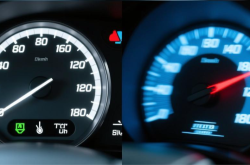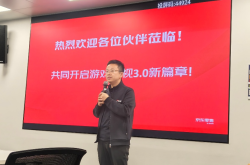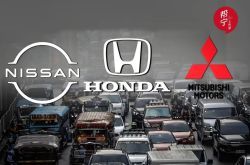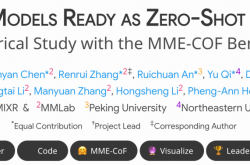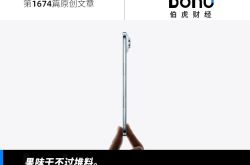When "Huawei" Ceases to Be a Guarantee of Success, What Can HIMON Auto Rely on to Retain Its Dominance Among Emerging Auto Brands?
![]() 11/13 2025
11/13 2025
![]() 371
371
In the fiercely competitive realm of new energy vehicles, HIMON Auto has emerged as a formidable dark horse.
On November 9th, Yu Chengdong announced that HIMON Auto had officially been on the market for a year, with cumulative deliveries exceeding 500,000 vehicles. This feat sets HIMON Auto apart among emerging auto brands, making it the top seller in this category and the champion for models priced over 500,000 yuan, earning it a dual accolade. Among its offerings, the AITO M9 has become a "star product" in the high-end market since its launch, dominating the sales charts for models in this price range for multiple consecutive months and breaking the long-standing monopoly of traditional luxury brands.
However, behind these seemingly remarkable achievements, can HIMON Auto truly afford to be complacent?
Growth Challenges
Despite HIMON Auto's impressive delivery numbers, numerous crises lurk beneath the surface of this prosperity.
Firstly, technological bottlenecks pose a significant hurdle for HIMON Auto. On July 23rd, 2025, during tests conducted by DCD Auto, the AITO M8, M7, M9, and Luxeed R7 all failed in the "Disappearing Vehicle Ahead - True Highway Edition" test, exposing HIMON Auto's technological shortcomings to the public.
Although HIMON Auto responded with "no comment" and released a semi-annual assisted driving report highlighting metrics such as total mileage, highway and urban assisted driving mileage, and risk avoidance incidents, the incident still raised public concerns about the safety and reliability of its technology.
Secondly, the once-powerful "Huawei effect" that conferred significant advantages to HIMON Auto is now gradually waning. On one hand, consumers have become more discerning and mature when purchasing vehicles, with a significantly reduced emphasis on "Huawei endorsement," considering multiple factors such as vehicle performance, quality, price, and brand reputation. Without the "Huawei effect," the various partner brands under HIMON Auto struggle to maintain high sales solely based on their brand heritage.
On the other hand, an increasing number of automakers are ramping up their R&D investments in intelligent driving and smart cockpits, launching competitive products. For instance, BYD has introduced the slogan of "Intelligent Driving for All," offering 21 models with enhanced features at no additional cost. Its "Divine Eye" high-level intelligent driving system caters to the market from 70,000 to 200,000 yuan, making intelligent driving accessible to a wider range of brands.
Thirdly, HIMON Auto also faces delays in product iteration and resource allocation. Taking the AITO M7 as an example, since its facelift in September 2023, there have been no significant upgrades or facelifts, gradually losing ground to new models continuously launched by competitors. In contrast, the Luxeed S7, after its 2024 launch, has undergone a series of optimizations and upgrades based on market feedback and technological advancements.
According to "Auto Expert," Huawei may be allocating more resources to models like the AITO M8 and M9, resulting in relatively insufficient investment in the R&D and marketing of the AITO M7, thereby affecting its upgrade speed. The AITO M8 is positioned as a mid-to-large SUV, with an expected price range of 350,000 to 450,000 yuan, filling the gap in the AITO series at this price point. Huawei has high expectations for it and has provided more support in resource allocation.
This uneven resource allocation is likely to lead to imbalanced development among the brand's internal models, weakening the brand's overall competitiveness and ultimately affecting its market position and future prospects.
Becoming the delivery champion is just the beginning. With DCD Auto crashes, a fading "Huawei effect," and internal resource struggles, HIMON Auto's "golden era" is being overshadowed by its own challenges.
Closing In
The intelligent driving sector has always been a fiercely competitive arena, akin to a "red ocean." In this battleground, although HIMON Auto has achieved certain successes compared to other emerging auto brands and tech giants, there are still gaps to bridge.
Among the emerging auto forces, XPeng, Li Auto, and NIO have established themselves in the market with their respective strengths, putting significant pressure on HIMON Auto.
From a product portfolio perspective, XPeng Motors focuses on sedans and SUVs, covering different price ranges with various models to cater to diverse consumer demands. Li Auto targets family users, emphasizing spacious interiors and long range, precisely positioning itself in the niche market. NIO adopts a high-end luxury route, not only focusing on performance and intelligent configurations but also investing heavily in service experiences to create a unique user community culture.
In contrast, although HIMON Auto has multiple brands, the positioning and differentiation among them are not distinct enough, leading to some internal competition. The AITO M9 has achieved success in the high-end intelligent SUV market, but other models have relatively weaker market influence and fail to form an effective product matrix synergy.
In terms of technological routes, XPeng has invested heavily in autonomous driving, with its XNGP all-scenario assisted driving system performing well in both urban and highway conditions, providing users with a safer and more convenient driving experience. Li Auto focuses on extended-range electric technology, effectively addressing user range anxiety by optimizing the collaboration between the engine and battery. NIO continues to deepen its research in battery swap technology, building a vast network of battery swap stations to provide users with fast and convenient energy replenishment methods.
Although HIMON Auto has strong technical support from Huawei and certain advantages in smart cockpits and autonomous driving assistance, there are still gaps in technological stability and maturity compared to the aforementioned brands. For example, in some complex road conditions, its autonomous driving system performs less consistently than XPeng's XNGP system; in terms of range and energy replenishment, it lacks prominent competitive advantages compared to Li Auto and NIO.
On the other hand, in the field of intelligent vehicles, tech giants such as Tesla, Apple, and Xiaomi are also formidable competitors.
Tesla, as a pioneer in the intelligent driving sector, holds a leading position in technological research and development and market share. Tesla's DOJO supercomputer has achieved a computing power of 100 EFLOPS, adopting a pure vision route and a one-stage end-to-end technology, approaching the L5 level of fully autonomous driving in its autonomous driving technology, and its robotic models can also be successfully implemented.
In terms of market share, Tesla has a large user base worldwide and maintains strong competitiveness in the mid-to-high-end pure electric vehicle market. In comparison, HIMON Auto has a significant gap in computing power with Tesla, as Huawei's computing power was 5 EFLOPS last year. The differences in technological routes also result in a certain distance between HIMON Auto and Tesla in terms of autonomous driving maturity and efficiency.
Apple has been dedicated to researching autonomous driving technology. Although its automotive project progress remains relatively enigmatic, given its technological accumulation in artificial intelligence, sensors, and other fields, once it launches automotive products, it will undoubtedly have a significant impact on the market.
Xiaomi Motors has shown rapid development since entering the market, with approximately 40,000 vehicles delivered in September 2025. By leveraging technologies such as sensors and motors from the automotive industry chain, Xiaomi may accelerate the integrated innovation of its intelligent driving system and also has unique advantages in smart cockpits and vehicle-machine interconnection.
Compared to Apple and Xiaomi, HIMON Auto has shortcomings in brand cross-border influence and the diversification of technological innovation, requiring continuous expansion of technological boundaries to enhance the brand's comprehensive competitiveness.
Industry Transformation
With the rapid development of technology, the intelligent driving industry will undergo numerous transformations and advancements.
Firstly, with the continuous upgrading of sensor technology and algorithms, the automation level of intelligent driving will continue to improve, advancing from the current L2 and L3-level assisted driving to L4 and L5-level highly autonomous and fully autonomous driving. Meanwhile, human-machine interaction will also undergo significant changes, evolving from traditional button and touchscreen interactions to more natural and intelligent voice and gesture interactions.
HIMON Auto should increase its R&D investment to continuously enhance its technological capabilities. Especially in terms of algorithm optimization, sensor fusion, and computing power improvement, efforts should be made to overcome technological bottlenecks. For example, strengthening algorithm training under extreme scenarios to improve the vehicle's response capabilities in complex weather and road conditions; developing more advanced sensor fusion technologies to achieve seamless collaboration among multiple sensors and enhance the accuracy of environmental perception.
Secondly, with the popularization of intelligent driving technology, consumers are no longer satisfied with traditional driving experiences but expect vehicles to provide more intelligent and humanized services.
HIMON Auto should launch innovative models that meet the needs of different consumers based on market demands and technological trends. For example, regularly upgrading existing models to optimize aspects such as vehicle range, smart cockpit interaction experiences, and safety performance. Optimizing the software system of the smart cockpit to make its operation smoother, the interface more user-friendly, and adding more practical functions.
Furthermore, with the widespread adoption of intelligent driving, vehicles will collect a large amount of user data, including driving trajectories, driving habits, and personal identification information. Data security and privacy protection will become crucial safeguards for the development of intelligent driving.
HIMON Auto needs to strengthen the application of technical means such as data encryption, access control, and data anonymization to ensure the security of user data during transmission, storage, and use. Relevant laws and regulations also need to be continuously improved to clarify data ownership, usage rights, and protection responsibilities, providing legal safeguards for data security and privacy protection.
In conclusion, facing the future trends of intelligent driving, HIMON Auto faces both challenges and opportunities. Only by acknowledging its shortcomings and actively taking measures to improve can it remain competitive in the fierce market competition, achieving a glorious transformation from a "new star" to a "fixed star" and providing users with a more intelligent, convenient, and safe travel experience.

